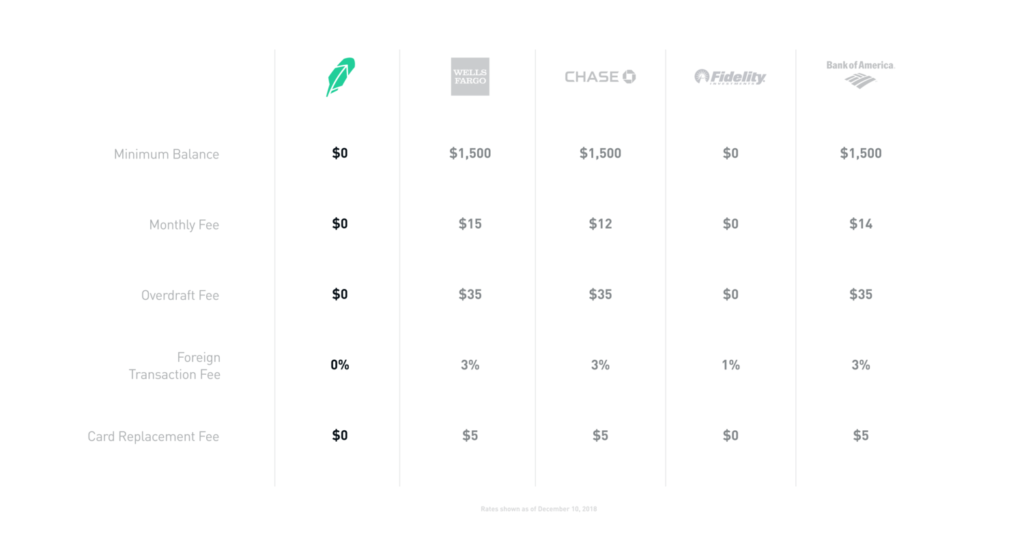UPDATE: Incredulously, Stephen Harbeck, the CEO of SIPC (the insurance organization that Robinhood claimed they would be using for their accounts) has publicly denied ever being contacted by Robinhood about their new program prior to the company’s public announcement on Thursday.
He also rebuked Robinhood for calling their cash management accounts “savings and checking accounts,” when they technically are not. His concern was that customers could be misled into thinking that their funds were protected in the same manner as bank accounts (which, as we explain below, they are not).
After Harbeck’s bombshell remarks, Robinhood began to receive widespread criticism from other players in the banking/investing industry. Finally, last night, Robinhood published a blog post, apologizing for the confusion that they may have caused and promising to make changes to their cash management program, including changing its name.
Wow, crazy stuff to say the least.
We’ll keep you updated as this story develops.
Robinhood, the app that has set the investing world on fire by offering free trades on stocks and ETFs, is now trying to steal business away from the big banks.
They have just announced that in early 2019 they will be offering checking and savings accounts with…get this…a 3% interest rate. Don’t worry, we’ll unpack that bombshell later. But for now, let’s cover the rest of the features that Robinhood says will be included in their accounts.
Robinhood says that their checking and savings accounts will have absolutely no fees and that customers will have access to over 75,000 free ATMs.
Is this a game-changer or is it too good to be true?
We’ll let you decide after we’ve covered all the details, both big and small, of Robinhood’s big move into banking. Let’s get into the nitty-gritty of all 3 of the main features that Robinhood announced today — beginning with that gaudy interest rate.
3% on Checking and Savings Accounts
Savings account rates have been dismal for a long time now. I just checked the current rates for Wells Fargo and Chase Bank, and they’re both .01%, which is a complete and utter joke.
Now, to be fair, several of the online banks have started to offer much more competitive savings account rates and even a few standard banks have started to join in. But with many of those traditional banks, you must meet a high minimum account balance, like over $25,000, to earn the high-interest rate. Most of us don’t have that kind of money sitting in our savings accounts.
But even if you do, the best rates I’ve seen anywhere so far have been 2.25%. That’s still far below what Robinhood is offering, and with no minimum account balances.
And let’s not forget that even the banks that are offering the “screaming deals” are only offering them on savings accounts. Robinhood is offering 3% on both checking and savings accounts.
That’s absolutely unheard of.
To put it in perspective, if you had $10,000 placed in a traditional savings account offering the national average rate of 0.09%, then you would make $90 in interest in a given year.
With Robinhood, you would make $300 in interest — a difference of $210.
No Fees
When Robinhood says “no fees,” that’s not just a marketing headline. They really mean NO FEES. Check out this fee comparison chart from their blog post:
Free ATMs
Finally, Robinhood will give customers free access to over 75,000 ATMs across the U.S. Robinhood boasts that they will have more free ATMs than the 5 largest banks combined. You’ll also be able to walk into stores like Circle K, Walgreens, Target, or Costco to get money for free.
While this may shock people who have been abused by the big banks’ outrageous fees for using out-of-network ATMs, Robinhood actually isn’t breaking any new ground here.
They haven’t worked out any special deals with stores to make their ATM transactions free. They’ve simply partnered with Allpoint and Moneypass like many other online banks have done.
With over 55,000 ATM locations (in all the stores mentioned above, plus Winn Dixie, CVS, Safeway, and more), Allpoint figures to provide the lion’s share of Robinhood’s in-network ATMs.
You’ll most likely incur a fee if you use ATMs outside of the Allpoint or MoneyPass networks. To find the closest free ATM to you, you’ll be able to use the “Find Free ATM” section of Robinhood’s app. You can also use the app to deposit checks, pay bills, and chat with customer support.
Ok, so that covers the 3 main features that Robinhood is touting with their checking and savings accounts.
Now let’s do some quick-hit FAQs to explore how the service will work and discuss the pros and cons.
Is Robinhood a Bank?
No. Technically, they are still a brokerage service, that happens to offer checkings and savings account services as an add-on to your brokerage account.
Robinhood sends you a debit card to use for making purchases. Many investment firms like TD Ameritrade, Charles Schwab, and Fidelity, all offer similar cash management services.
Is Robinhood Insured?
Yes, but, again, since they are not a bank, they are not FDIC insured.
Instead, they are insured up to $250,000 by the Securities Investor Protection Corporation (SIPC). SIPC insures many other investment firms, so this shouldn’t be a reason for concern, but it’s still something you should know.
For details about the difference between FDIC and SIPC insurance, check out this article from SIPC’s website.
Will I Be Able to Deposit Cash Into My Robinhood Account?
No. Like other online banks, there is no way to deposit cash into your Robinhood account.
If you don’t deposit cash very often, you can get around this by buying money orders and uploading or mailing them to Robinhood.
However, if you’re going to need to deposit cash on a regular basis, then I would recommend keeping an account open at a traditional bank (as long as they don’t charge you any fees for low balances). That way you can deposit cash into your traditional bank’s account and then transfer it over to your Robinhood account.
Is it Simple to Lock Down Robinhood’s Debit Card?
Yes, you can lock your debit card directly from the app.
You can also set up Location Protection on your app to prevent anyone from using your debit card when it is outside a certain distance from your phone. Pretty nifty, but could also be pretty annoying if you left your phone in the car or let your spouse use your card.
Thankfully, you can turn off Location Protection if the feature doesn’t appeal to you.
Will Robinhood’s Debit Card Support Mobile Payments?
Yes. Right out of the gates, Robinhood will support Google Pay, Samsung Pay, and Apple Pay.
When Can I Open My Account?
Right now, Robinhood has a waiting list for those who want to open accounts. They say that they’ll start rolling out the service in January 2019 and will begin in the order of the waitlist.
Click here to enter your email and get your name on this list.
Conclusion:
We’re early in the game, but so far I like what I’m hearing from Robinhood. It’s about time that someone pushed the banking industry to start offering competitive interest rates to customers again.
But there’s still one thing those big banks have going for them and that’s the ability to receive cash deposits. If that’s not important to you though, I would definitely consider giving Robinhood a shot.
Hopefully, Robinhood’s move will eventually force some of the bigger players to up their game by increasing their savings account interest rates and cut junk fees.
Robinhood has revolutionized the investing industry. Here’s to hoping they can have a similar effect on the banking world!


